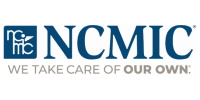This Subject Number highlights the significant changes contained in the amended regulation. The complete text of the amended regulation is located on the Board’s website under Laws, Regulations and Decisions.
Notices, Provision of Information, and Requests for Information
Service of Notices by Overnight Mail: Notice of the scheduled IME may be made using overnight mail as long as the notice is received by the claimant at least seven days prior to the scheduled examination.Provision of Information: A new requirement has been added to the regulation that requires that every record, document, or test result supplied to an IME examiner for review in connection with an IME or records review must be a part of the Board file. Any information that is not already part of the Board file must be submitted before or at the time the IME or records review is arranged. Information submitted to the Board before or at the time the IME is arranged should not be submitted to the Board as a Request for Information using an IME-3.
Note: The submitting IME examiner must list all documents, reports, and other items reviewed in the IME or records review report.
Requests for Information: An IME-3 must be submitted to the Board when the provider receives any substantive communication regarding the claimant. An IME-3 shall not include documents, records, and items that are part of the Board file.
Reports of Examinations without Physical Examination or Records Reviews
A records review conducted by a medical provider without physically examining the claimant must be completed by a medical provider authorized to treat workers’ compensation claimants or authorized to conduct IMEs, or “qualified” within the meaning of 12 NYCRR §300.2 (b)(9). A medical provider that completes a records review must adhere to the rules governing IME reports at 12 NYCRR §300.2 (d)(4) including certifying the contents of the report and listing every document, record, or item reviewed in connection with the records review. A report of a records review must be submitted to all parties and the Board at least three business days before the hearing where it will be referenced.Videotaping of IMEs
The amended regulation clarifies that an IME examiner may not refuse to conduct an IME when a claimant appears at the IME prepared to record or videotape the IME. A party (or agent of a party) may not alter a recording or videotape, nor may a videotape be distributed beyond its use in a hearing of the Board.Reports
The amended regulation sets forth specific criteria for the content, certification, and signing of an IME report and a records review report. The reports must list all documents, records, and items reviewed by the examiner. Any questionnaires or intake sheets completed by the claimant must be attached to the report. In addition to the parties and the Board, copies of all reports must be submitted to attending providers that have treated the claimant within the last six months. The regulation states that a treating provider who examined the claimant solely for consultation or to perform a diagnostic test does not need to receive a copy of the report. The regulation specifies that a report may not be based on a checklist or questionnaire.Exemptions
The amended regulation clarifies that a carrier's medical professional, as that term is defined in 12 NYCRR §324.1 (c), is not an IME examiner within the meaning of WCL §137 and 12 NYCRR §300.2. In addition, an examination conducted at a clinic that is a member of an occupational health network established pursuant to WCL §151 (3) is not an IME within the meaning of WCL §137 and 12 NYCRR §300.2.IME entities
The term IME entity is defined. Services that may be supplied by an IME entity are described. The amended regulation sets forth clear and specific rules for IME reports submitted by IME entities. The amended regulation also clarifies that the IME examiner is responsible for certifying the contents of a report and that an IME report may not be derived from an IME examiner completing a checklist or form. The process for registering an IME entity is updated.Suspension and revocation of the authorization of IME examiners and IME entities
The amended regulation updates the process and basis for suspending and revoking the authorization of a provider to perform IMEs and records reviews. The process and basis corresponds to the process and basis for suspending and revoking the authorization of treating providers as set forth in WCL §13-d.The amended regulation also sets forth a process for revoking the registration of an IME entity.
Robert E. Beloten
Chair
Source




